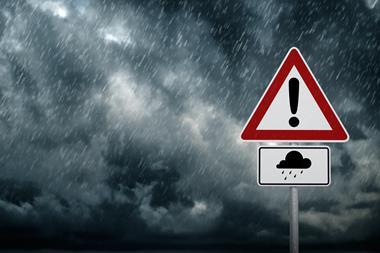What lasting impact has the Gulf oil disaster had on the risk management profession. StrategicRISK investigates
When the drilling station Deepwater Horizon exploded and sank last April, killing 11 workers and seriously injuring 16 others, the world looked on helplessly as thousands of gallons of crude oil gushed into the Gulf of Mexico.
Numerous failed attempts by BP and the American government to stem the flow saw massive economic and ecological damage done to the area and, by the time the leak had been capped nearly 3 months later on July 15th, almost 5m barrels (210m gallons) had leaked.
Fuelled by the one year anniversary of the disaster, attention has refocused on the necessity of proper risk management and effective fallout mitigation.
Yet the announcement this week that BP has issued $40bn worth of lawsuits against its contractors Halliburton, Cameron and Transocean, means that a comprehensive overhaul of risk prevention and mitigation systems is unlikely to occur any time soon.
In an internal 193-page investigation into the incident published late last year, BP spread cited “a complex and interlinked series of mechanical failures, human judgments, engineering design, operational implementation and team interfaces” as the cause of the disaster.
However, the lack of interaction and cooperation between the companies has seen a failure to remedy the situation through ineffective mitigation.
A January 2011 White House National Commission report on the oil spill urged “better communication within and between BP and its contractors” and demanded “internal reinvention… and sweeping reforms that accomplish no less than a fundamental transformation of its safety culture”.
Yet fallout from the disaster has been met with only a blame-game from the companies involved: BP’s internal report laid significant blame on its contractors, who responded in turn by dismissing the report as fundamentally flawed.
This evasion of responsibility has seen a failure to adhere to risk mitigation practices that could have significantly limited the environmental and economic costs.
In June 2010, the US House Committee on Energy and Commerce criticised BP for its failure to test cement at the well, which would have cost around $150,000 and taken around 8-12 hours.
Despite the prolonged and ongoing fallout though, lessons have been learnt from the disaster.
Carolyn Williams, Head of Though Leadership at the Institute of Risk Management, told StrategicRISK that “since the BP oil spill many companies have been asking themselves 'What could be our Deepwater Horizon?' and subsequently building this sort of reverse scenario planning into their risk management”.
“Whereas the BP situation underlined the need for a stronger emphasis on process safety - as well as individual safety measures - it is also recognised that Black Swan type accidents can still happen, even with industry-standard risk management in place. This shifts the focus to resilience and recovery - ensuring that the organisation can recover quickly from an incident and that its impact - human, financial, environmental and reputational - is minimised.”
The government has also taken steps to prevent such disasters in the future, splitting the agency that oversees off-shore drilling by segregating the divisions responsible for safety regulations and the collection of industry royalties. The government also temporarily suspended deep-sea drilling to investigate and reinforce design and safety requirements.
And, despite the impending legal furore, BP’s new chief executive Bob Dudley has hinted towards progress.
In an op-ed in the Wall Street Journal he indicated that BP was “creating a central safety and operational-risk organization reporting directly to me”.
Dudley insisted that this organisation would have “the authority to intervene in our operations anywhere in the world… linking the management of employees’ performance and reward directly to safety and to compliance with BP’s standards”.
The CEO also added that BP had “either turned away rigs or are negotiating for modifications to particular rigs that will bring them up to our standards.”
Yet though measures have and are being implemented, the situation is still a long way from being resolved. A recent environmental report suggested that it could be decades rather than years before the full extent of the dame becomes clear, whilst the legal battle between BP and its contractors is set to obfuscate an already complex web of systematic problems underlying the economic and environmental fallout of the disaster. Lessons have been learnt from the Deepwater Horizon disaster: whether improvements will be fully and effectively implemented remains unclear.



















